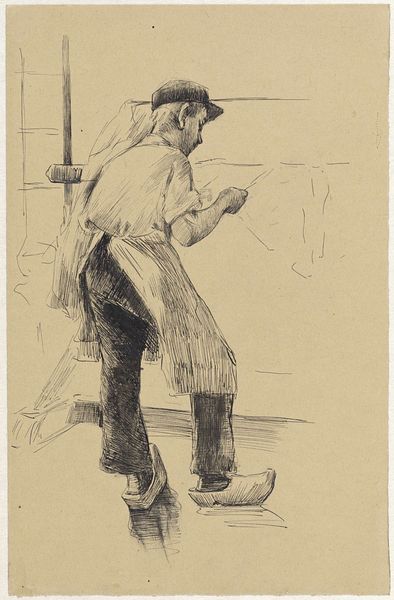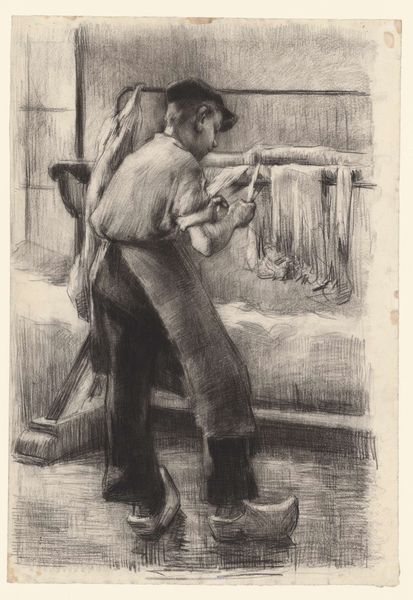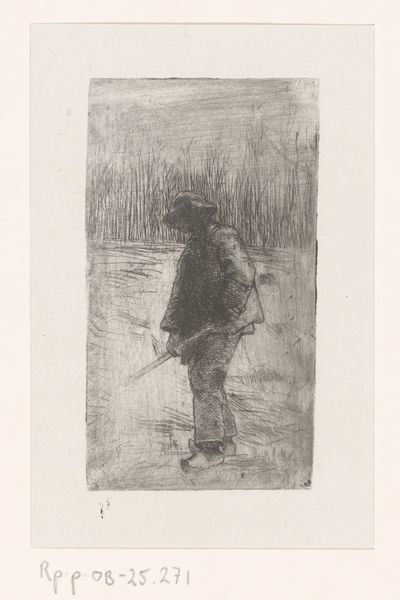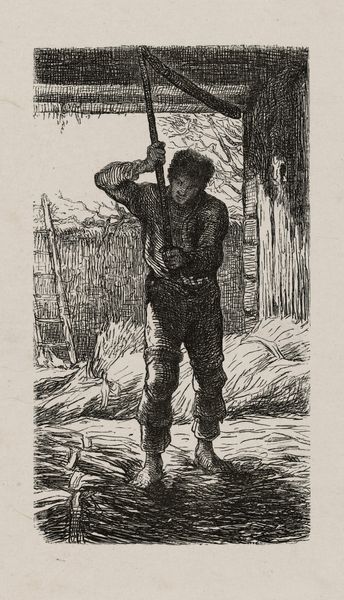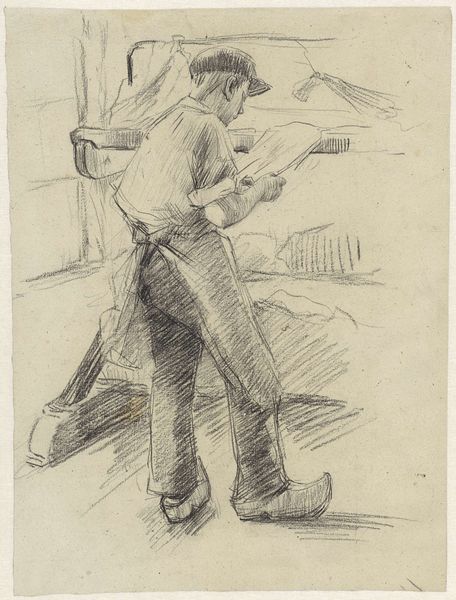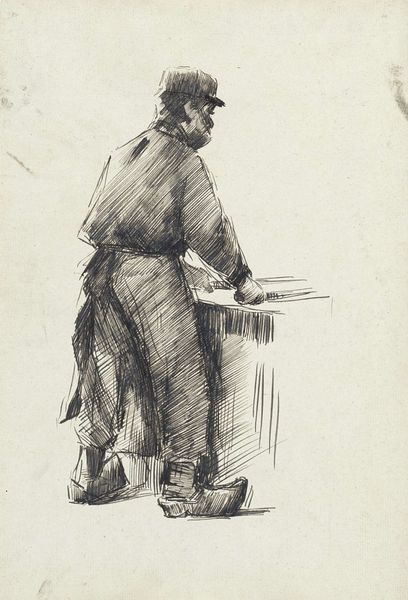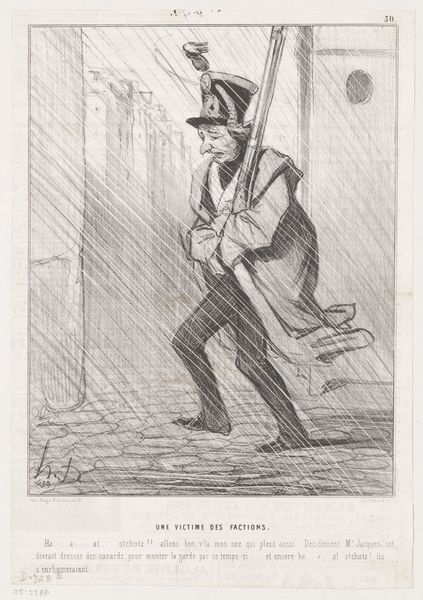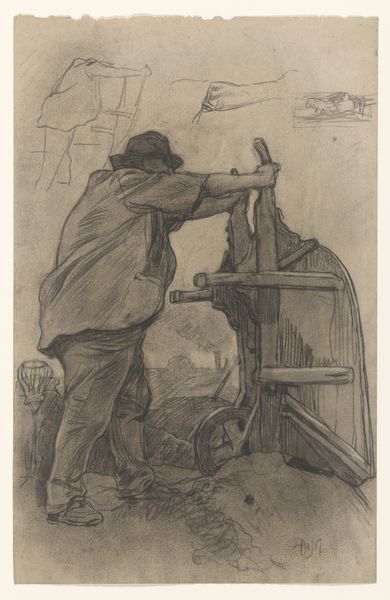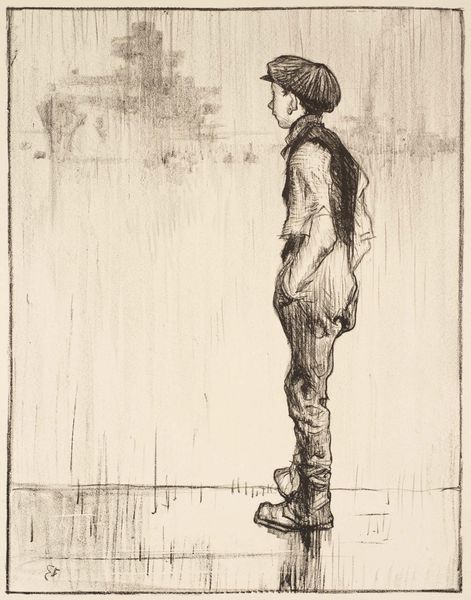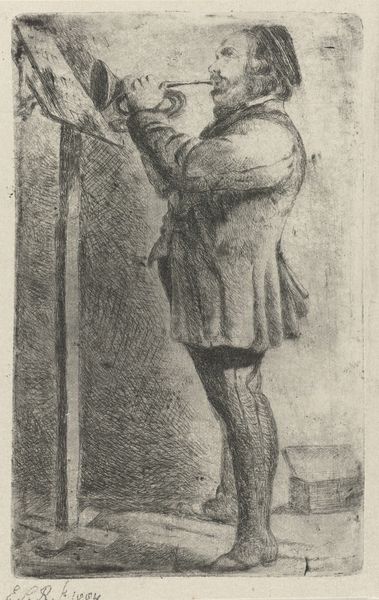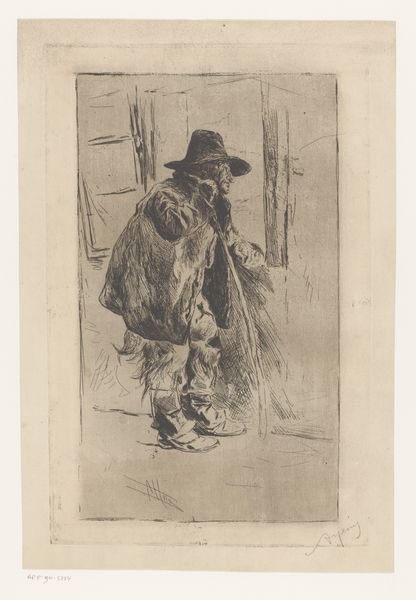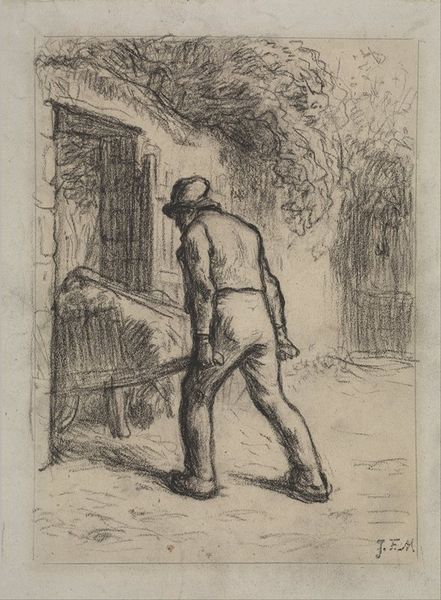
drawing, charcoal
#
drawing
#
charcoal drawing
#
portrait drawing
#
genre-painting
#
charcoal
#
history-painting
#
realism
Dimensions: height 554 mm, width 398 mm
Copyright: Rijks Museum: Open Domain
Editor: Here we have Anthon Gerhard Alexander van Rappard's "Fabrieksjongen aan het werk," made with charcoal sometime between 1868 and 1892. The scene is stark, focused on the boy’s labor. The medium really conveys the grit of the factory. What historical narratives does this evoke for you? Curator: The image places the viewer in the middle of a profound socio-economic shift. Rappard's choice of realism highlights the lived experience of the working class, particularly child laborers, at a time when industrialization was rapidly changing society. Notice how he depicts the boy not as an individual but as a figure subsumed by the machinery and the repetitive nature of factory work. It becomes a powerful comment on the loss of childhood. How do you think the image might have been received in its own time? Editor: Given the social movements that were emerging, I imagine this image could have served to raise awareness. Was Rappard known for this kind of social commentary? Curator: Absolutely. Rappard was deeply concerned with social justice and frequently depicted the lives of ordinary people, often collaborating with Vincent van Gogh on such subjects. He used his art to expose the harsh realities of poverty and exploitation. Consider the setting – the factory becomes a character itself, oppressive and inescapable. Editor: Seeing it through that lens changes things. It's not just a portrait, it’s a statement. Curator: Exactly! The artwork is a critique, urging the viewer to question the societal structures that allowed such conditions to exist. Think about how such imagery may have fueled reform movements or influenced labor laws. It reflects a specific moment, doesn't it? Editor: Definitely. I didn't realize the extent of its socio-political undertones. Now it feels like more than just an image of labor; it's an indictment of an era. Curator: Precisely! By engaging with the social and political context, art offers so much more.
Comments
No comments
Be the first to comment and join the conversation on the ultimate creative platform.
